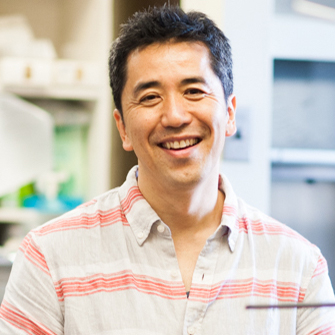“Herbal Probiotics”: Bacteria on Medicinal Plants Contribute to Immune-Boosting Benefits
Juzen-taiho-to (JTT) is a mixture of medicinal plants used in Japan to help cancer patients rebuild their immune system after chemo and radiation therapy. Studies have shown that it improves the number and functioning of white blood cells, which help fight off infections, such as bacterial infections.
But while JTT has been used for centuries, its immune-boosting ingredient has eluded scientists. NIMHD-supported researchers from Hunter College of the City University of New York recently discovered a likely candidate.
“We originally thought a plant molecule was responsible, but it was not. It was the tiny amount of some other molecule hiding underneath the plant molecule,” said Akira Kawamura, Ph.D., associate professor of chemistry in the NIMHD-supported Center for Translational and Basic Research (CTBR) at Hunter College. Kawamura was lead author on the study, which was published in Bioorganic & Medicinal Chemistry Letters.

Kawamura suspected that the hidden molecule was coming from bacteria on the plant. That’s because when his lab treated white blood cells with JTT, the cells turned on the same genes as when they encounter certain bacteria. When these genes are turned on, they stimulate the white blood cell to fight the invading bacteria and send signals activating the rest of the immune system.
The main way white blood cells recognize Gram-negative bacteria is through a molecule on the outer surface of bacteria, called lipid A. To check whether this could be the beneficial ingredient in JTT, the researchers treated JTT with a chemical that removes these molecules. When lipid A was removed, JTT stimulated the white blood cells less than half as much.
“It was an interesting discovery,” said Kawamura. “We totally didn’t expect what was happening.”
The researchers then separated the lipid A molecules from the rest of the bacteria and plant material in JTT and showed that the molecules activated white blood cells. The shape of lipid A can vary between bacteria, and the shape affects how strongly the immune system reacts to it. The lipid A molecules Kawamura’s lab isolated were slightly different from other known lipid A types, which have mostly been studied in harmful bacteria, not those on plants. This difference in shape could help explain why JTT is beneficial to humans. Kawamura’s lab is working to determine the exact shapes of the lipid A molecules in JTT and to test whether they work in animals.
This could eventually help scientists create immune boosting treatments for cancer and other patients. Though Kawamura cautions that the story may be more complicated: It might be that the lipid A molecules are helpful only if they are taken as part of JTT, which includes plant molecules. That’s because too much immune system stimulation by lipid A molecules can be toxic. Combining anti-inflammatory molecules from plants with lipid A might help boost the immune system just the right amount without going overboard. Kawamura plans to test the lipid A molecules alone and in combination with other bacteria and plant molecules in JTT.
This was one of the first studies to find that bacteria contributed to the immune-boosting benefits of medicinal plants. But Kawamura sees implications far beyond JTT and even other medicinal herbs, since bacteria are everywhere.
“When we are eating plants, we are eating bacteria,” Kawamura said. “It really opened up my eyes to consider the bacterial contribution in many aspects of our research.”
For example, Kawamura’s lab looked at the kinds and amounts of bacteria that could be making the lipid A molecules in the most potent plant in JTT. Rahnella aquatilis was the most abundant type of bacteria, likely playing a role in JTT’s immune boosting benefits. This type of bacteria is also found on a lot of foods commonly eaten in the United States, including apples. And where the apples are grown and how they are handled, such as whether they are treated with pesticides or fertilizers, may affect what bacteria are on them. That means that where people get their apples and whether they eat apples at all could have consequences for their overall health.
“No one has really looked into this,” said Kawamura. “Hopefully, we can continue this line of research and figure out how lipid A from bacteria on our food affects human health in the long run—and how that may be able to address some health disparity issues.”
References
- Montenegro, D., Kalpana, K., Chrissian, C., Sharma, A., Takaoka, A., Iacovidou, M., … Kawamura, K. (2015). Uncovering potential “herbal probiotics” in Juzen-taiho-to through the study of associated bacterial populations. Bioorganic & Medicinal Chemistry Letters, 25, 466-469. doi: 10.1016/j.bmcl.2014.12.036.
Posted August 28, 2017

















